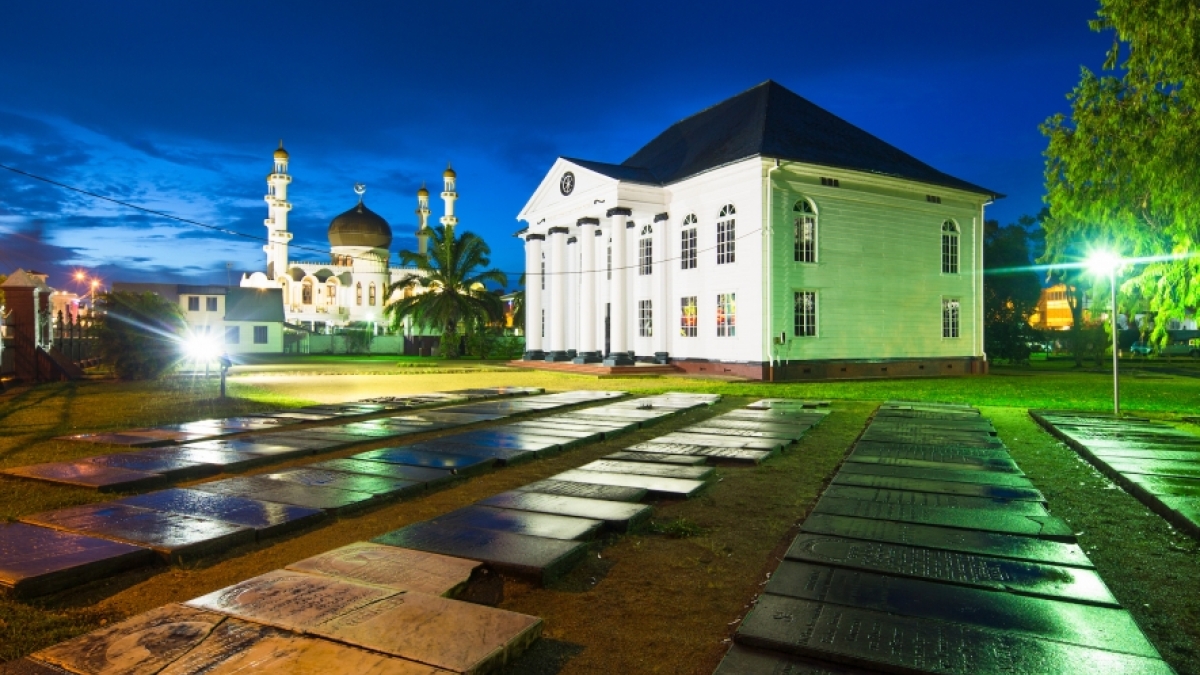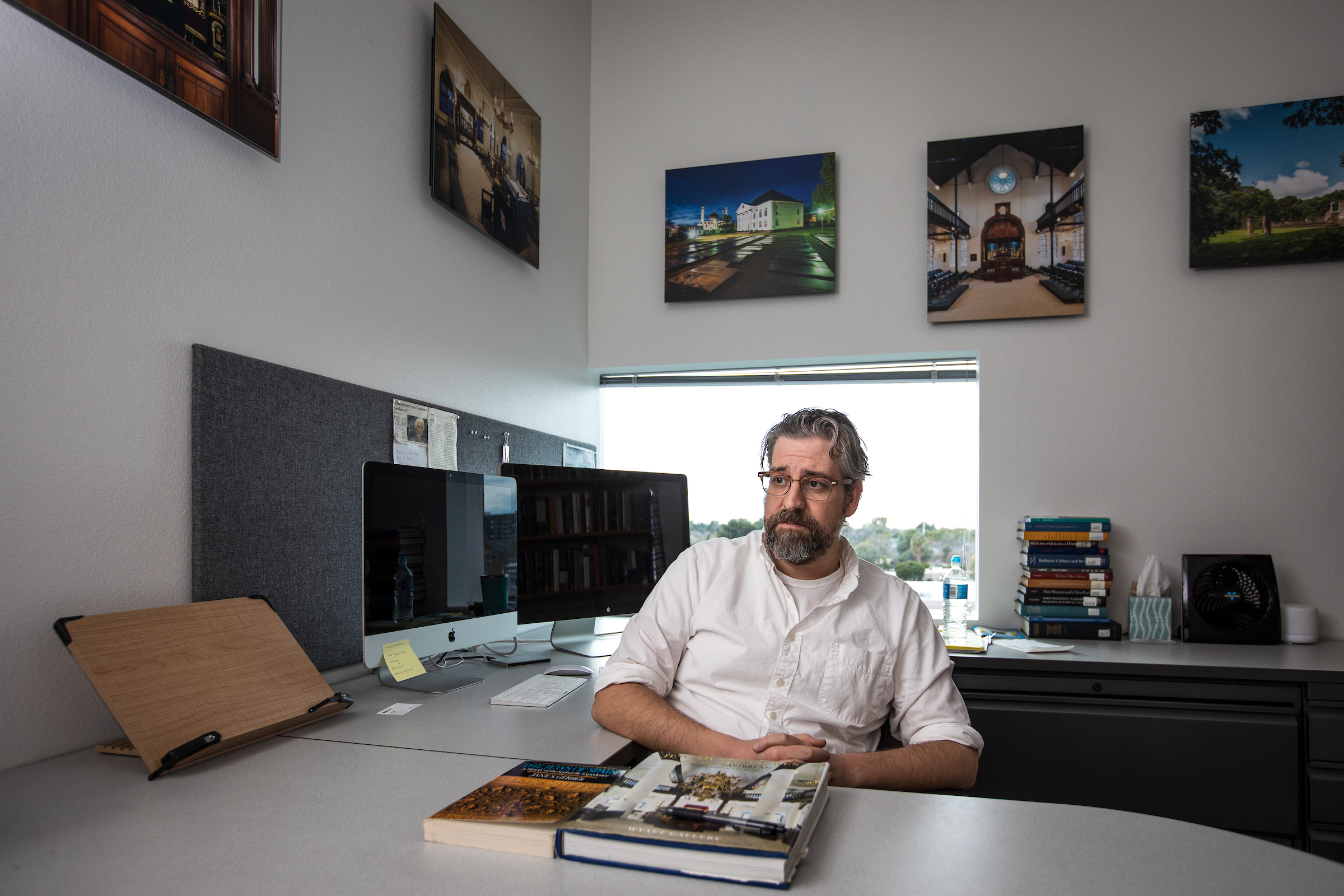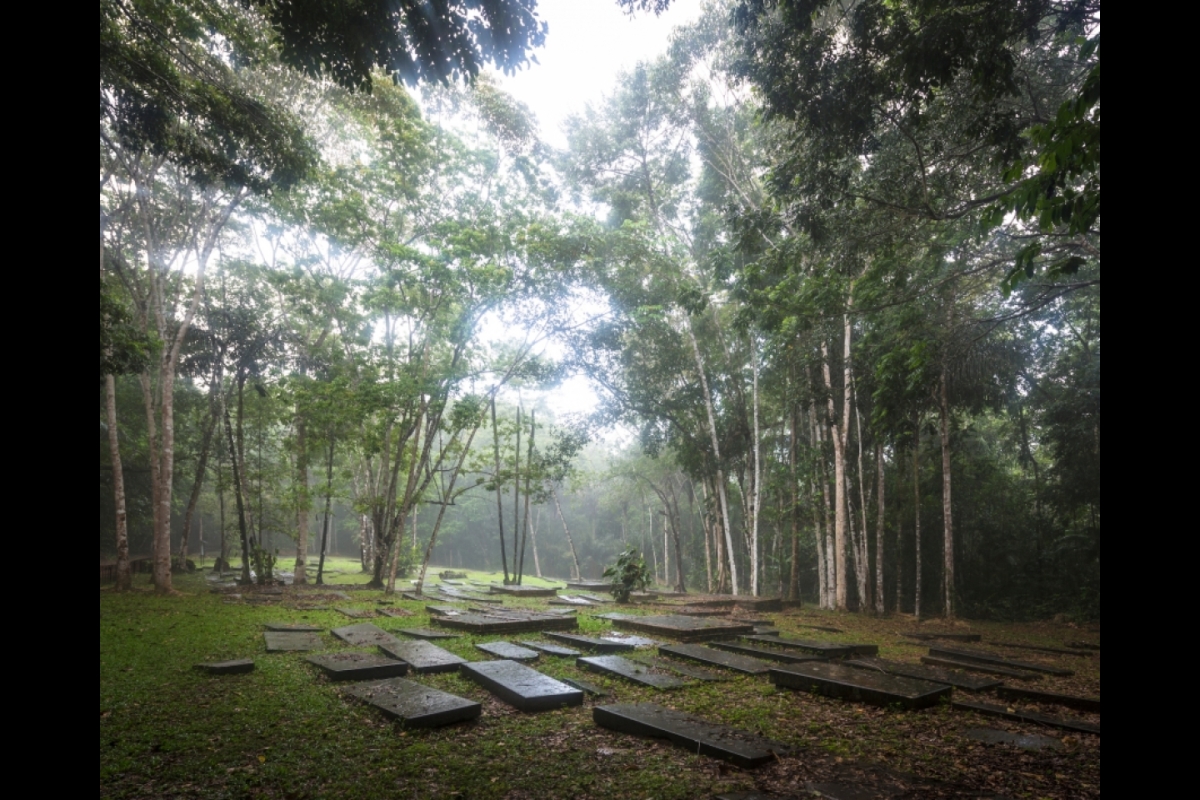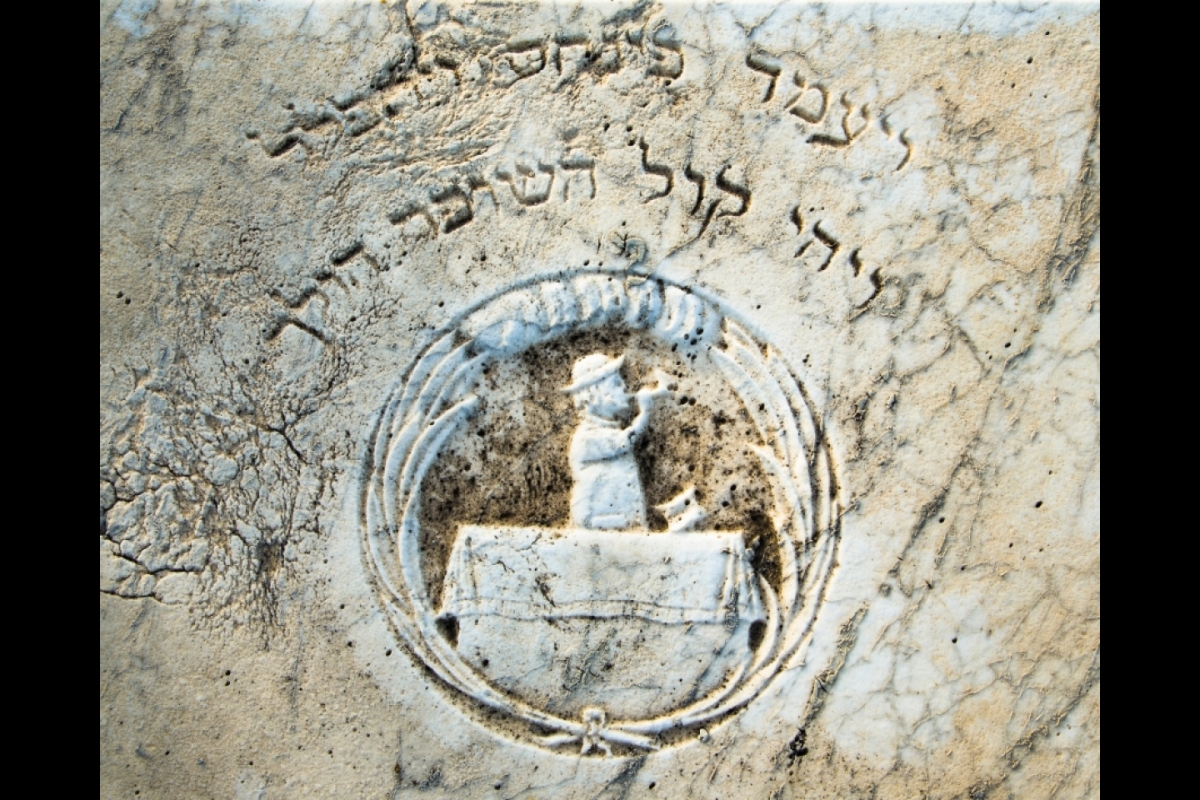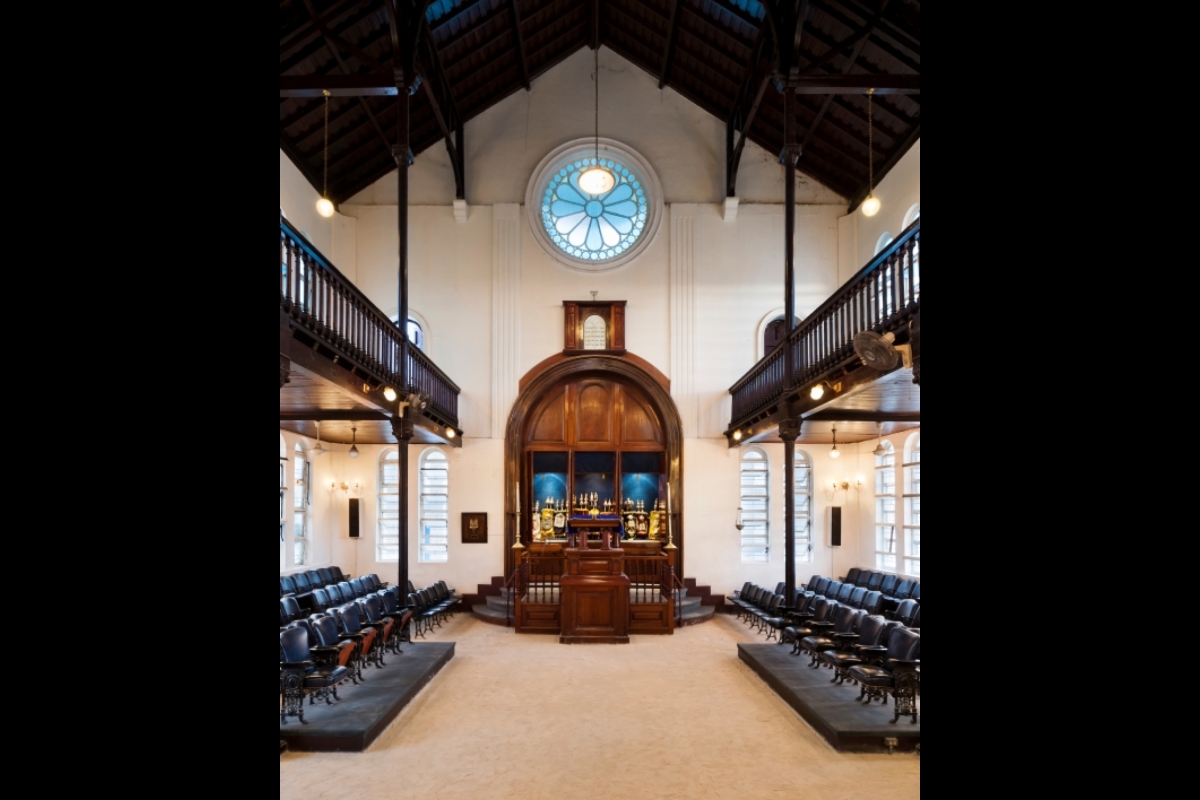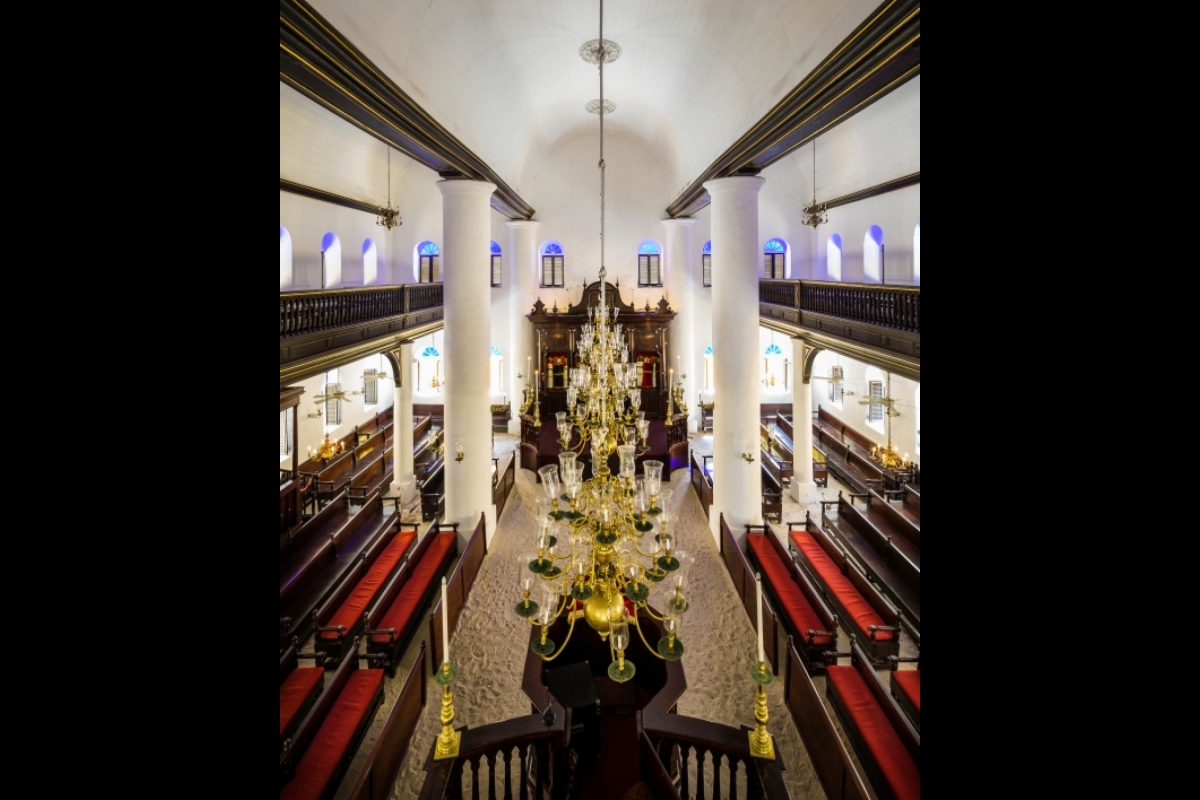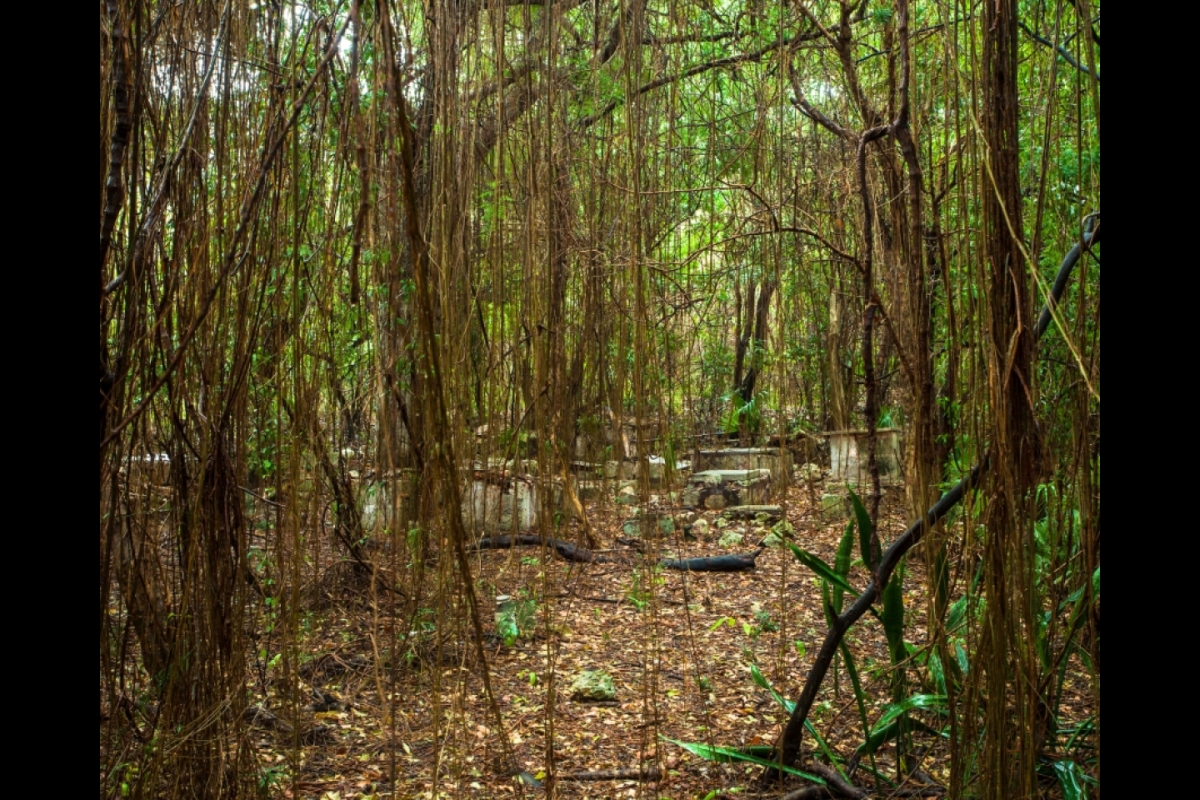Like many great collaborations, the one behind the 2016 photographic essay “Jewish Treasures of the Caribbean” originated via serendipitous circumstances.
Stanley Mirvis, an assistant professor of history at Arizona State University and a scholar of the Sephardic diaspora, was doing archival research in Jamaica when he ran into Wyatt Gallery, a well-known photographer whose book “Tent Life: Haiti” had chronicled the aftermath of the 2010 earthquake that devastated the region.
In addition to the millions of people affected by the quake, Gallery had witnessed the destruction of countless historical sites, including several Catholic cathedrals. With that experience fresh in his mind, and an awareness of the threat future natural disasters posed to remaining religious historic sites, Gallery was in Jamaica on a mission to document the many synagogues and cemeteries there that tell the arcane history of the earliest Jewish communities in the New World.
Together, he and Mirvis set out on an island-hopping journey of discovery that took them from Curacao, an island off the coast of Venezuela that at one time was the largest Jewish community in the Caribbean, to Barbados, where Jews fought for their right to free trade during the colonial period.
Arizona State University Assistant Professor of history and Harold and Jean Grossman Chair in Jewish Studies Stanley Mirvis. Photo by Charlie Leight/ASU Now
In “Jewish Treasures of the Caribbean,” Gallery’s arresting photos are supplemented by Mirvis’ contextual essays. Now through March 26, those images and stories are on display as part of a free, public exhibit by the same name at the Arizona Jewish Historical Society in Phoenix.
As the Harold and Jean Grossman Chair in Jewish Studies at ASU, Mirvis believes public programming such as this is part of his civic responsibility.
“There is a really large Jewish community in the Valley, and they're very interested in exploring the Jewish experience in an academic way and looking at matters of Jewish identity in history,” he said. “The Center for Jewish Studies at ASU hopes to provide that through their robust public programming, which includes film screenings, continuing education programs and exhibits like this.”
The exhibit opened Jan. 12 with a short lecture and reception. The next related event will take place at 7 p.m. on Thursday, Feb. 13, when Mirvis will lead a conversation about Edward Kritzler’s popular yet controversial book “Jewish Pirates of the Caribbean.”
Mirvis recently spoke with ASU Now about the lesser-known history of the Sephardic diaspora and how it changes our understanding of the origin of Jews in North America.
Q: What is a Sephardic Jew?
A: You may have heard that Jews are often referred to as either Ashkenazi or Sephardic, and that's sort of a false bifurcation, but generally speaking, Sephardic was the Hebrew terminology that Jews used to describe themselves as being Spanish, and Ashkenazi was this term that Jews used to describe German lands and northern France. So that is why there's this division now. It's not a true division, and there are many different subethnicities based on your language, and that manifests in the different traditions that you have. But Sephardic and Ashkenazi are kind of the big ones.
Q: What were the circumstances of the Sephardic diaspora that led so many Jews to settle in the Caribbean?
A: Somewhere around 200,000 Jews were expelled from Spain in 1492. This was one of the largest upheavals of people up until that time. In late medieval/early modern standards, 200,000 people is an enormous dislocation of human beings. It's a major world event and it has extremely important ripples throughout history. Most of those Jews that left Spain went to Portugal and were forcibly converted to Catholicism but continued to practice Judaism in secret.
Then let's skip ahead a bit: In the 17th century, a lot of these Portuguese converts were leaving Portugal and settling in new communities in Western Europe that were now open to them to live openly as Jews; cities like Amsterdam, Hamburg and later London. Around the same time, the Dutch and the English were pushing their reach into the Caribbean. Then in 1630, the Dutch take part of northern Brazil from the Portuguese. So a lot of the Portuguese converts – those who were living in the Portuguese world in Brazil who couldn't openly be Jews – now ran to the Dutch to live openly as Jews. So in the community of Recife in northern Brazil, you have a really large Jewish community that emerges in the 1630s and '40s, and this ends up being the seed community for a whole Jewish population in the Americas. Where it all starts to become a Caribbean story is in 1656, when the Portuguese conquer the Dutch in northern Brazil and kick all the Jews out. Just like in Spain back in 1492. So some of them crossed the borders into what is today Suriname and Guyana.
Most of them do go back across the ocean to Amsterdam where they join other settlement schemes to come back. So a lot of these early settlers cross the Atlantic four or five times, and variously, they began to settle the Dutch and English islands, including Curacao, a small island off the coast of Venezuela, which becomes the biggest Caribbean Jewish community, and Jamaica in 1655 when the English take it from the Spanish and it becomes open to Jewish settlement. There’s a lot more to the story (the French expelled the Jews from the Caribbean in 1685, forcing them into the English and Dutch Caribbean regions) but that is the broader story of the Sephardic diaspora.
Q: How does this change our understanding of the origin of Jews in North America?
A: When you think of Jews in the Americas, you think of New York City and you think of the United States as being the most important location of Jewish settlement. But in reality, the origins of that story are in the Caribbean. And that's one of the stories that we're trying to tell here. The first Jews that really come to New York, although there were some Jews already there, but the mythic forefathers of New York and the mythic forefathers of all North American Jewry were these 23 Jews that come to New York – which at the time, in 1654, was called New Amsterdam. They were expelled from Brazil and they came via the Caribbean, stopping in Spanish Jamaica and then through Cuba. The first communities in the colonial period were Sephardic. So sometimes American Jewish historians refer to this as the Sephardic period, through the age of the Early Republic. Newport, Rhode Island, had a Sephardic Jewish community that emerged in 1680 who were almost all from Barbados. They were Portuguese speaking, their communal minutes were written in Portuguese and they had names like Lopez, De Costa and Alvarenga.
Around 1740, a community of Portuguese Jews in London sent indigent individuals to go settle in Savannah, Georgia. During the revolution, Philadelphia becomes a major Sephardic city. And then later on, Charleston, South Carolina, also gets populated by Jews from Barbados. But throughout the whole colonial period, you could take all of those Jews put together – from Newport, Savannah, Charleston, Philadelphia, New York – and altogether, they're still not as many as there are just in Kingston, Jamaica. And in Jamaica, there are multiple communities. There’s communities in Kingston and Spanish Town and Montego Bay and Savanna La Mar and Lucea. And Curacao is even bigger than Jamaica, and Suriname is about the same. So any one of those Caribbean locations — Suriname, Jamaica or Curacao — on their own, are bigger than all North American Jewry put together in the 18th century. So it's a very flawed way of looking at American Jewish history to be so focused on what becomes the United States. The notion of Jews in America as being from Poland or Germany is because of later migrations. In the 1850s, you have Jews from German lands that come to America and populate further inland, places like Ohio, Illinois and Pennsylvania. And then in the 1880s and 1890s, there are these pogroms against Jews in eastern Europe, so that's when you start to have Jews from Ukraine, Belarus and Lithuania starting to come en masse. And then of course another migration associated with World War II.
Q: Why is this something most Americans don’t know about?
A: For a couple of reasons. Number one, the Sephardic experience period isn't really studied as much. And that's largely because the professionalized study of Jewish history emerged in Germany. And another thing is that it really gets overshadowed by the Holocaust. So the vast majority of Jewish studies is now devoted to that. And then also because American Jewish history became a very distinct field over the past couple of decades, but only recently has American Jewish history also taken note of the Caribbean part of it as a serious thing, not as a side note. There's a trend in the historiography to try to really look at the Caribbean on its own terms. For instance, my new book, “The Jews of Eighteenth Century Jamaica,” is coming out in May with Yale University Press, and also in May, there's a book coming out with University of Pennsylvania Press by a great scholar of this field, Aviva Ben-Ur, who is writing about the Jews of Suriname. In fact, she was very instrumental in a program to catalogue remnants of tombstones in Suriname. So our two books are pretty much the first ones to really look at these places — Jamaica and Suriname — on their own terms. And there's also been a slew of articles about this, but it says a lot that in the same month you have two books coming out, one by UPenn Press and one by Yale Press, that have Jamaica and Suriname in the title.
Q: What else about the Sephardic diaspora might surprise people?
A: The story about the town of Jodensavanne is really cool, because deep in the Surinamese jungle, you have an autonomous Jewish planter village. So the people who run the town are Jews. The people who inhabit the town are Jews. They own thousands of slaves and they have their own militias that are fighting maroon communities, these autonomous black communities, in the jungle. And the Jews build this grand synagogue in 1685 in the middle of this jungle, (later it becomes defunct and burns down and all that's left is the remnants) and they built a really vibrant city around it. There were taverns and recreation halls and all of these things. So it's a really incredible story because you always think of Jews in this period as being the subalterns, minorities, victims sometimes, being chased from place to place, always living under some other rule, be it Islamic or Christian. And here in Dutch Suriname, deep in the Amazon jungle, you've got this autonomous Jewish village, and they have their own kind of a very brutal autonomy — because they live in a slave society, they’re slave owners — but it's one where they're empowered in ways that are unavailable to Jews in Europe.
Q: What can be done to save these sites?
A: There are a lot of options. Number one, there are individual efforts to go and restore and catalogue tombstones. For example, there's an architect from New York, Rachel Frankel, who has a volunteer expedition, and they go yearly to Jamaica and they restore and catalogue tombstones. The communities also do a lot to preserve their own buildings, and there's been a lot of expat money coming in from Americans who are relocating to Barbados to restore and keep these as historical sites by getting them recognized by national heritage trusts. UNESCO is one really important one. My hope is that we can also devise efforts to keep the synagogues alive and extend membership to people who have heritage living in other parts of the world. So there are a lot of ideas.
Q: What else do you hope the community gets out of this exhibit?
A: These are very beautiful buildings, and it's very important to recognize that these kind of exotic Jewish communities that no one really thinks about anymore were central to the American Jewish experience. But also what's important to me is the reality of Jewish slave ownership. And this is an uncomfortable reality, and it's important to me to make this point that behind these very beautiful buildings is also a very brutal history that Jews also need to kind of reconcile. In fact, in Jodensavanne in Suriname, the slaves that the Jews owned communally, they would brand them on the shoulders with “BVS,” for Berakha ve Salom, which is the name of the synagogue they built. So there's a really brutal history here too. And it's hard because, like at Passover you sit together and you remember how Jews were slaves to Pharaoh in Egypt. And then you have to reconcile these two competing realities that Jews were also slave owners. And that's not to vilify Jews, but to humanize them. It's important to me that we look at the holistic picture of all of this: what's behind these beautiful images.
Top photo: Neve Shalom is the only active synagogue in Suriname today. Originally constructed in 1719 for the Ashkenazic Jewish community in Paramaribo, Neve Shalom was regarded as a satellite of Jodensavanne synagogue rather than a new congregation. It was the house of worship for both Sephardic and Ashkenazi Jews until 1735 when the Sephardim constructed their own synagogue. Photo by Wyatt Gallery
More Arts, humanities and education

ASU professor, alum named Yamaha '40 Under 40' outstanding music educators
A music career conference that connects college students with such industry leaders as Timbaland. A K–12 program that incorporates technology into music so that students are using digital tools to…

ASU's Poitier Film School to host master classes, screening series with visionary filmmakers
Rodrigo Reyes, the acclaimed Mexican American filmmaker and Guggenheim Fellow whose 2022 documentary “Sansón and Me” won the Best Film Award at Sheffield DocFest, has built his career with films that…

Upcoming exhibition brings experimental art and more to the West Valley campus
Ask Tra Bouscaren how he got into art and his answer is simple.“Art saved my life when I was 19,” he says. “I was in a dark place and art showed me the way out.”Bouscaren is an …


